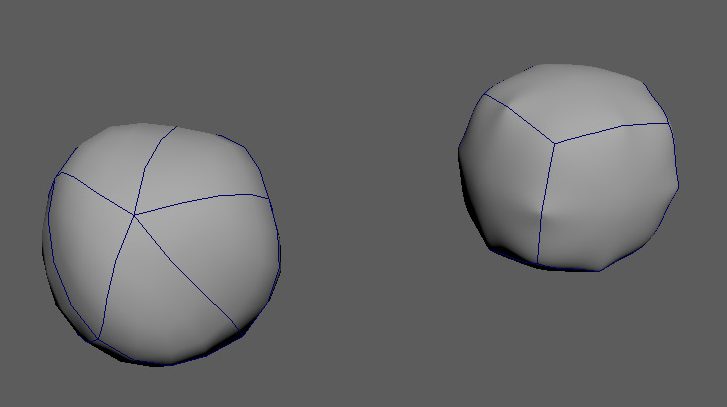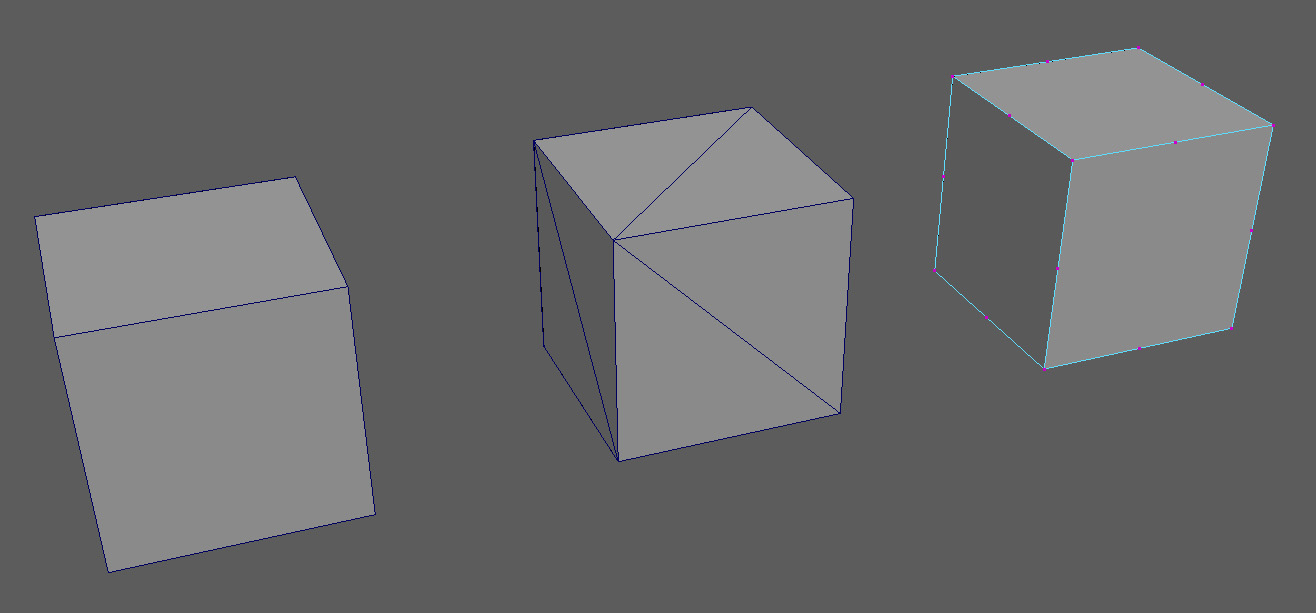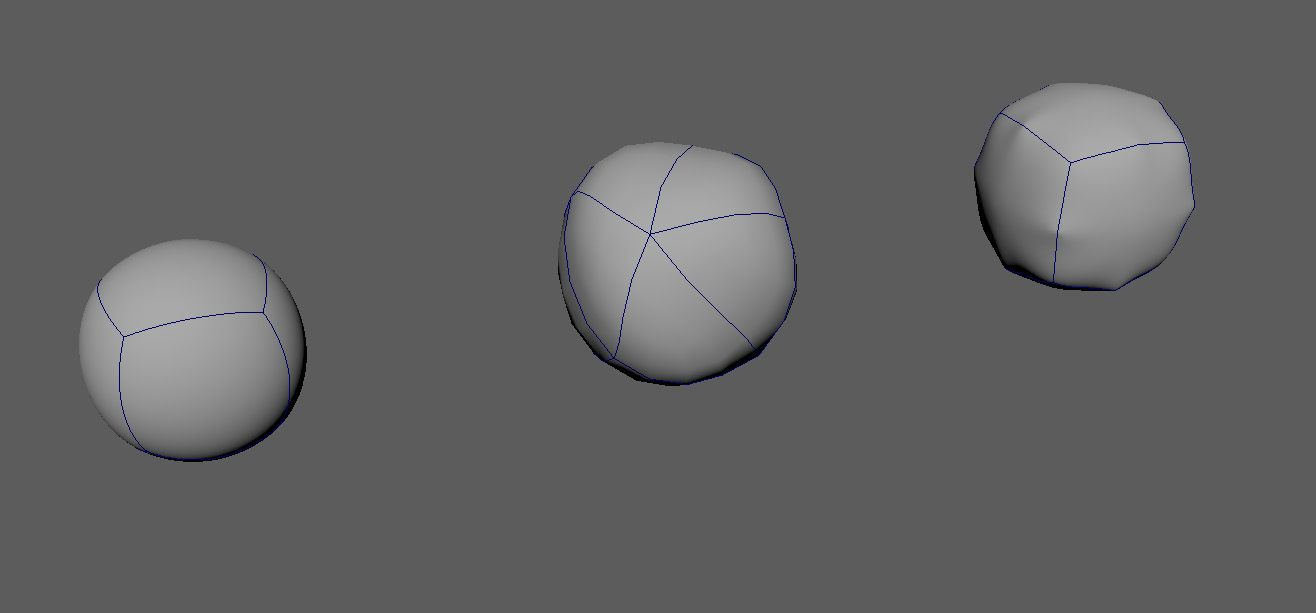
29 May Why quads are better than tris and n-gons
I was preparing another post when I have felt the need to write about this.
When I started doing 3D it took me a while to understand the importance of good topology and how this is of capital importance if we want predictable results when subdividing, but more important if the subdivided geometry is going to be deformed. Let’s have a look at the following pictures:


On the left we have three cubes, from left to right, cube 1 is all quads, cube 2 faces have been triangulated and cube 3 is all n-gons as every face that conform it is composed of 8 edges.
If we apply the catmull-clark subdivision method -right pict- we will see that the cube formed by quads is quite smooth and rounded while the others result in weird geometry and artifacts. Furthermore, not only the first shape is smoother but it is also the one with less polygons which on top reduces rendering time.
When modeling we should try to maintain quads whenever possible, and to reduce n-gons to quads or tris as much as possible. If we can’t avoid them then we must at least try to put them in areas where the problem is minimized, for example on planar surfaces or hidden parts of a model. I personally think that n-gons should be avoided and converted to quads or even triangles in a model.
But… then what happens in games? We tend to hear that games engines are more triangle friendly. The reason is hardware. For a game engine it is faster to work with triangles, and usually what it does is to convert a quad to a couple of triangles before rasterization. This doesn’t imply that we have to model in triangles. What we’ll have to do is try to get the cleanest topology in quads. It’ll be easier to triangulate after, as a quad can be easily converted to triangles by creating an edge between two opposite vertices.

No Comments